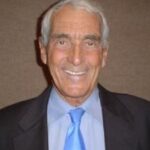Freshman U.S. Senator Ben Sasse (R-NE) has written a book that could well be the answer to problems plaguing the millennial generation and the efforts to form the next generation through the terribly flawed Common Core educational requirements.
Few could be better credentialed to make such recommendations. Sasse was raised on a Nebraska farm, received a wrestling scholarship to Harvard University, then went on to Oxford University, and earned a Ph.D. in history from Yale University. Sasse became one of the youngest college presidents ever, taking the helm of Midland University in Nebraska at age 37. In five years, he straightened out the school’s finances and became a serious expert on the millennial generation.
Endless Adolescence
Sasse offers J. M. Barrie’s Peter Pan as a depiction of endless adolescence, which surely makes for good theatre but a very poor lifestyle choice. Sasse argues today’s young American adults are largely existing in a Neverland mindset.
Sasse blames much of the millennial problem on American culture placing too much emphasis on formal schooling and taking too much responsibility off the shoulders of parents, which parallels the decline of the nuclear family. The tradition of gathering at dinner tables across the country has been replaced with families playing on their separate screen devices instead.
Nature of Public Education
When Sasse began his doctorate studies at Yale, he and his schoolteacher wife were beginning the education of their young children and reading up on educational theory. They came upon the writings of social critic Paul Goodman, who had said, “At some point in the life of our nation we ceded too much authority to ‘professional educators.'”
Goodman envisioned alternative programs in which adolescents could be educated more diversely than in homogenized buildings filled with identical classrooms. It became obvious to Sasse that the failure of public education as he saw it was unrelated to per-student expenditures, which he carefully documents as having climbed rapidly. Worse yet, Sasse notes, government schools have evolved to replace parents instead of supporting them, taking over the grand cause of nurturing the coming generations.
The Joys of Work
“Schools fail to acknowledge the Socratic insight that at a certain age learning cannot be force-fed,” Sasse writes. “It needs to come in response to genuinely asked questions by genuinely curious people.”
In other words, experts can’t educate your kids unless the latter want to be educated. Sasse repeatedly emphasizes the importance of work in a young person’s upbringing. Because he was brought up that way in his youth, he mistakenly thought it was a natural phenomenon for all children, he writes.
Sasse chronicles how our ancestors’ suspicion of leisure endured until the dawn of the 20th century, when the Industrial Revolution delivered vast wealth and efficiency, along with a growing middle class that did not need to work as hard to subsist.
In his chapter on the joys of work, Sasse spares no criticism of the faults of what he sees as an entitled millennial generation. We must help kids understand the “whys of work,” he writes, offering 15 projects for kids growing up. These lessons should start early, Sasse suggests: “Send your two-year-old to fetch your socks each morning,” he writes.
Reducing Consumption
Sasse focuses another chapter on reducing our consumption of things we want but clearly do not need. It is a how-to lesson for parents to counter the common childish argument of, “But my friends have it.” Sasse discusses the notion of “conspicuous consumption,” a term coined by Thorstein Veblen in 1899 in his book The Theory of the Leisure Class.
In contrast with the accumulation of material goods, Sasse strongly believes in the benefits of travel, be it to a fishing hole, a country fair, a family vacation, or a cross-country car ride. Along the way, parents can help children focus more on the people and culture, wherever they go, rather than just sightseeing and entertainment. Sasse offers useful pointers on how to accomplish this.
Appreciating Reading
The most impressive and useful chapter on educating children is dedicated to an appreciation of reading, a lost pastime for most people today. The Bureau of Labor statistics reports the average American now reads but 19 minutes a day.
Sasse recommends creating a five-foot shelf of books to be read as a child grows up. This concept began in 1909, when Harvard President Charles W. Eliot developed the five-foot bookshelf, eventually to be called The Harvard Classics, commercially published as a set that sold 350,000 copies over the following 20 years. I was fortunate to obtain a used set in my youth. Sasse shares the 60 books he chose for his shelf, and the list alone is worth the price of his book.
Becoming truly literate is a choice, Sasse writes, and stressing again the value of hard work, he writes, “Reading is not a passive activity like sitting in front of a screen. It requires a degree of attention, engagement, and active questioning of which most of our children are currently deficient.” Children whose parents heed Sasse’s advice will benefit greatly from the lessons he provides in this book.
Jay Lehr, Ph.D. ([email protected]) is science director at The Heartland Institute.





